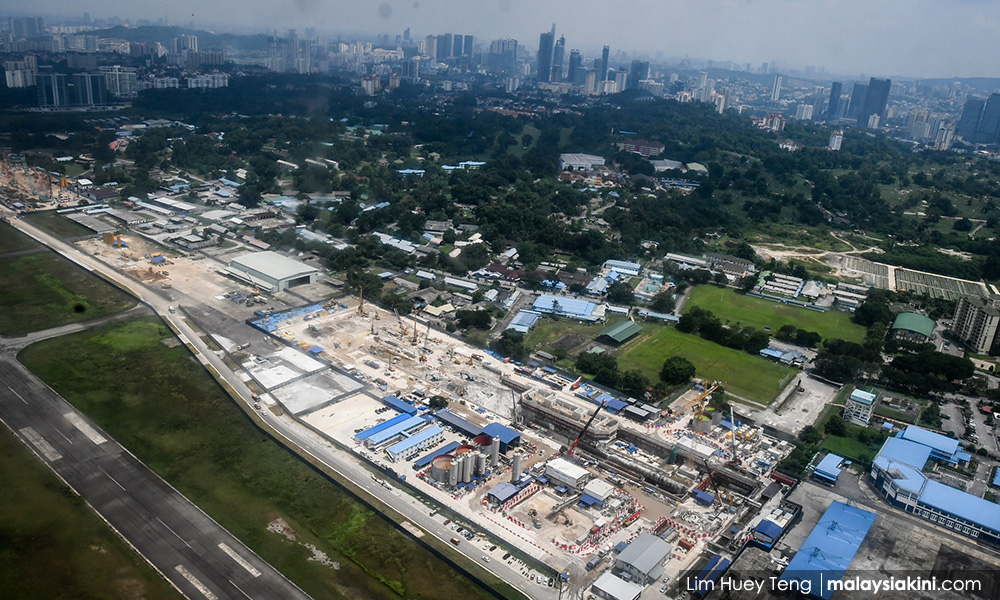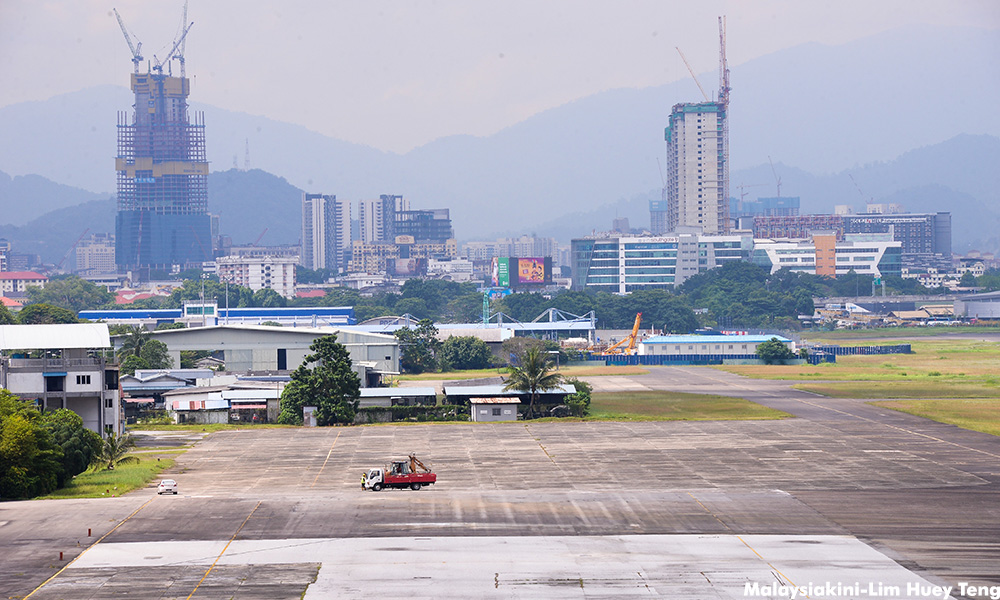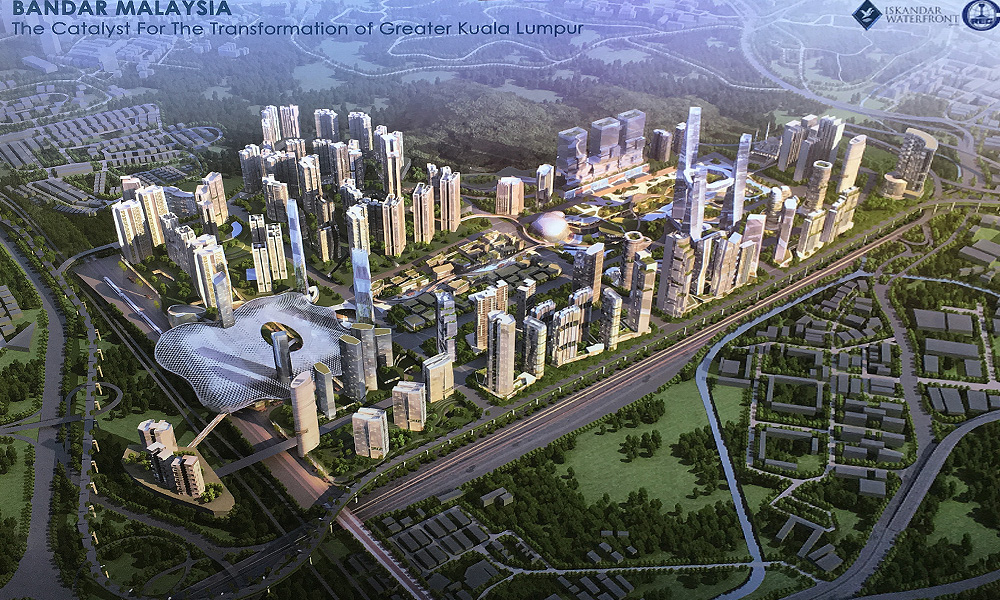
QUESTION TIME | The government’s surprise revival and reinstatement of Najib Abdul Razak’s supermassive RM140 billion Bandar Malaysia development project at the old Royal Malaysian Air Force (RMAF) base in Sungai Besi, Kuala Lumpur, raises very serious and troubling questions.
This project, which involved a sale of 60 percent of Bandar Malaysia - the project company - to a Malaysia-China consortium for RM7.41 billion, had been terminated by the previous regime because the 10 percent deposit, RM741 million, had not been paid.
It originated as a 1MDB project when the RMAF base of 1.96 hectares was sold to 1MDB by the government at a price much lower than the market price, reportedly at RM76 per sq ft. Such land is currently selling for as much as RM3,000 per sq ft.
Bandar Malaysia is a huge project - the total development value is more than RM140 billion, which would easily make it among the largest single property developments in the country. The only one which may be larger is the Forest City Development in Johor, a joint-venture (JV) between the Johor sultan and a Chinese company, which reports say could be worth RM400 billion.
The reversal of the Bandar Malaysia deal is rather perplexing. The Najib administration had terminated the deal but Prime Minister Dr Mahathir Mohamad now says it was unfairly terminated. He has reinstated the agreement with the only additional requirement being that the consortium pays a further RM500 million in addition to the original RM741 million deposit.

Under the new deal, a 60 percent stake of Bandar Malaysia land is to be sold to the initial contractor IWH-CREC Sdn Bhd - a consortium comprising Iskandar Waterfront Holdings Sdn Bhd (IWH) and China Railway Engineering Corp (CREC) - because the previous administration had been “unfair” to them in terminating their agreement.
IWH is reportedly 60 percent owned by prominent businessman Lim Kang Hoo through his private company Credence Resources Sdn Bhd, while the remaining shares are held by a Johor government company, Kumpulan Prasarana Rakyat Johor (KPRJ). According to its website, KPRJ, which is wholly-owned by the Johor government, was set up in 1995 and has a paid-up capital of just RM1 million. The remaining 40 percent of Bandar Malaysia is owned by TRX City, a wholly-owned subsidiary of the Finance Ministry.
The Prime Minister’s Office (PMO) in a statement on the revival said: “The government welcomes the commitment by IWH-CREC to make an advance payment of RM500 million in addition to the original deposit sum of RM741 million to be paid within sixty (60) days from the date that the government officially reinstates the project.
“In an international open tender exercise participated by over 40 world-renowned companies, including from Japan, Australia and the Middle East, the JV to take up 60 percent of Bandar Malaysia Sdn Bhd was awarded to a consortium, IWH-CREC Sdn. Bhd. (ICSB).”
However, TRX City had a different story to tell previously. This deal, originally also valued at RM7.41 billion, was signed on Dec 31, 2015, but subsequently terminated by TRX City in May 2017, one year and five months later.

This is what TRX City said on the termination of the deal:
“This is because, despite repeated extensions being granted, IWH-CREC failed to meet the payment obligations outlined in the Conditions Precedent under the share sale agreement. As a result, the share sale agreement between the parties stands null and void with immediate effect.
“TRX City will immediately be inviting expressions of interest for the role of master developer of Bandar Malaysia, with full ownership being preserved by the Ministry of Finance. The selection process will involve very strict criteria, including track record, speed of delivery and financial capability for such large-scale development. This is to enhance all aspects of Bandar Malaysia, including its role as a business, transport, residential and tourism hub.”
However, the consortium said in response that “this does not fully and accurately reflect the circumstances and conduct of the parties in this matter”.
What is important to note is that TRX City said it will take back full ownership of the project and get a new master developer. This would have been far more desirable than the new arrangement because the government will have ownership of the master plan and can then assign specific projects to different developers via open tenders. That ensures a wide distribution of property development.
Malaysia has considerable property development expertise and there is really no reason to surrender part ownership of an effective 24 percent (40 percent of 60 percent) ownership to a Chinese company, CREC. Also, by keeping ownership of the project, the government would have received far more gains for itself, which I estimated here at a colossal over RM90 billion.
The table taken from that article gives a rough breakdown of costs and expenses showing how the government can make over RM90 billion from Bandar Malaysia.
Instead, the government has given back this cancelled project to the consortium and in the process given up control of a valuable piece of land dating back from the bad 1MDB days, the careful development of which would have eventually brought it returns greater than that of the money lost by 1MDB of over RM30 billion.
Why?
P GUNASEGARAM laments the continuing lack of transparency, accountability and good governance in government almost a year after Pakatan Harapan has taken over. He says it is a colossal mistake to benchmark ourselves against a kleptocratic government. E-mail: t.p.guna@gmail.com - Mkini




No comments:
Post a Comment
Note: Only a member of this blog may post a comment.